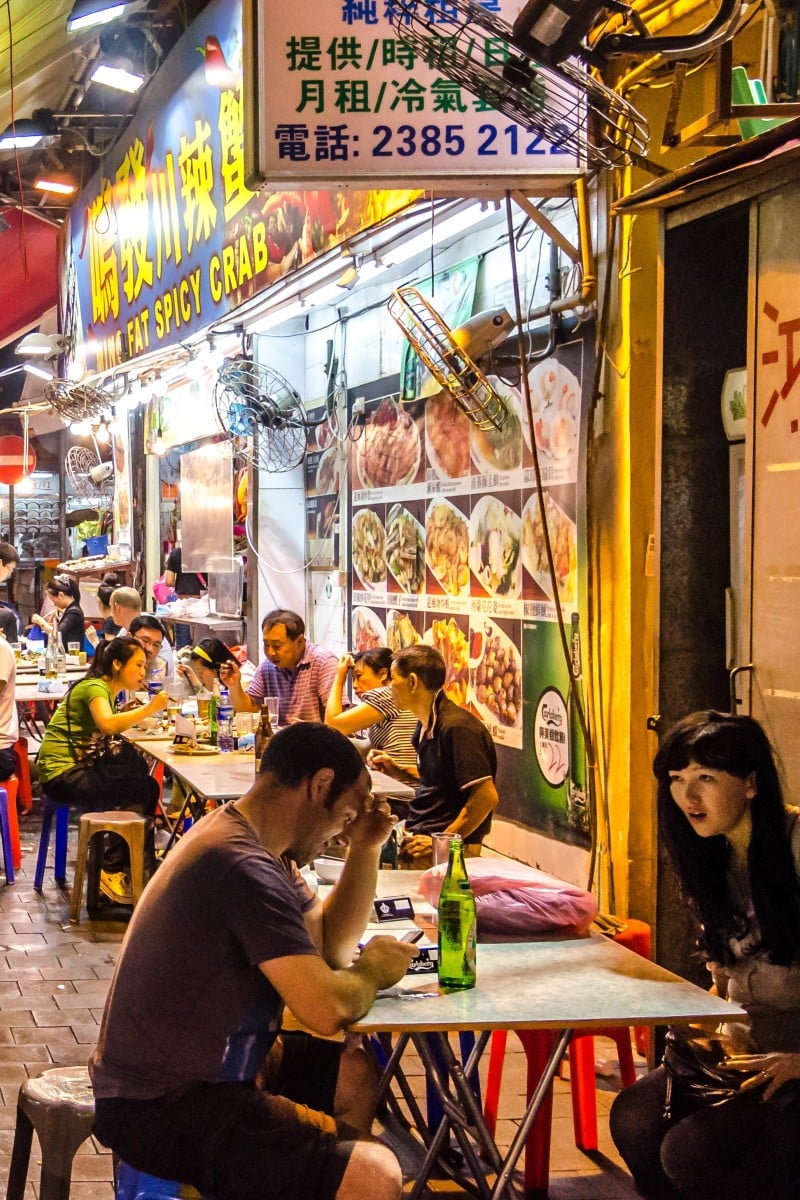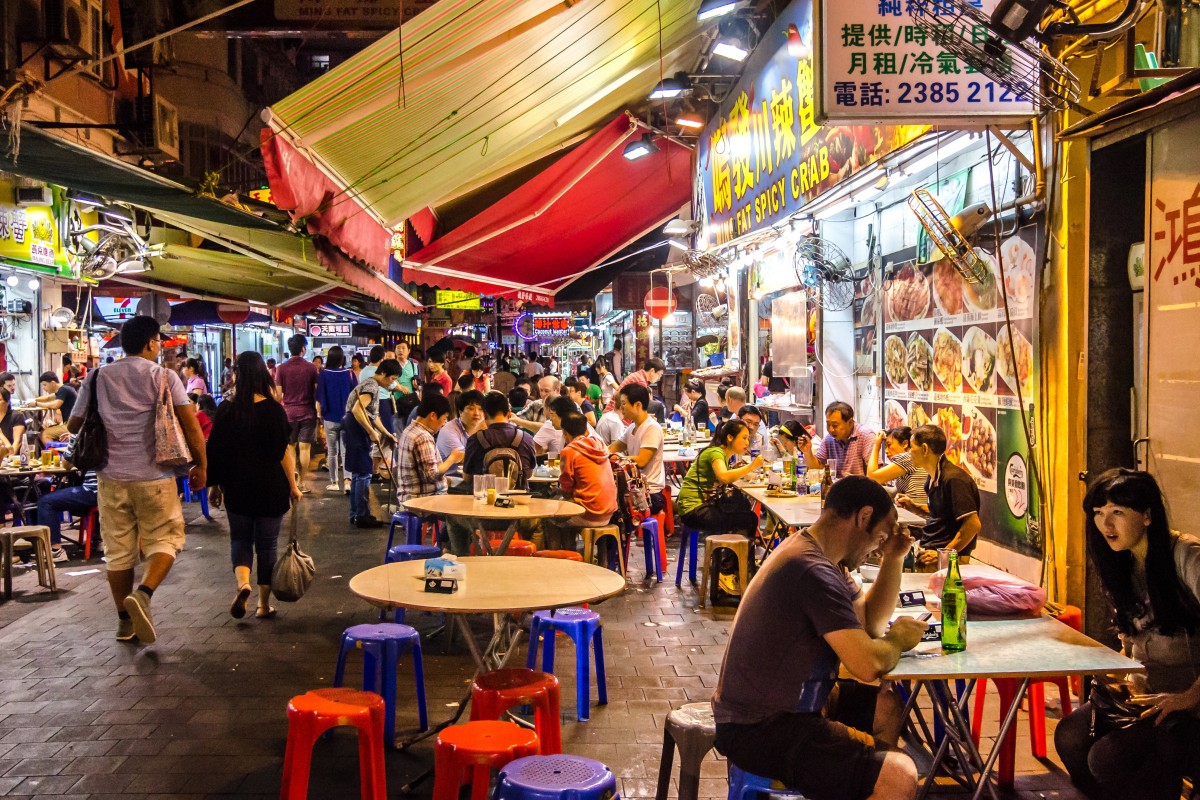
Hong Kong’s favourite street foods and the stories behind their strange names
- ‘Butter pig’ with no pork? Where did the name ‘husband roll’ come from?
- Check out tasty treats like ‘chicken poop mochi’ and ‘tiny hibiscus’
 What's your 'can't miss' street food?
What's your 'can't miss' street food?Local snacks in Hong Kong never cease to amaze. From orange peel fish balls to deep-fried siu mai topped with salt and pepper, going on a Hong Kong street food crawl can be just as satisfying as an all-you-can-eat meal.
If you are getting tired of the street food you’ve already tried, switch things up by trying some of these tasty treats.
5 spots in Hong Kong and what their names mean in Cantonese
Butter pig
Judging by its name, “butter pig” sounds like a heavy pork dish you might find in a Cantonese restaurant. However, it’s a round bread roll that has been cut in half and toasted. It is topped with butter and condensed milk. Hong Kong people call it a “pig” because of its plump shape.
For breakfast, “butter pig” pairs well with a Hong Kong-style milk tea, coffee or yuen yeung (a mix of milk tea and coffee). But for lunchtime, locals usually order this as a side dish to a bowl of savoury noodles.
You can find “butter pig” in most cha chaan tengs in the city, such as Tsui Wah.
Butter pig may sound like a heavy pork dish - but the 'pig' actually comes from the plump shape of the bread.
Husband roll
If you see a sign in Tai O that says “husband only HK$30”, this strange bargain actually refers to a traditional Hong Kong snack – the husband roll.
Even though it’s called “husband roll”, it is entirely different from the wife cake or sweetheart cake you may have seen elsewhere. While the wife cake is a sweet pastry filled with a paste made from winter melon, almond, and sesame, the husband roll is savoury.
It’s an Indian roti wrapped around a tasty mix of stir-fried minced pork, shredded lettuce, and Tai O’s specialty shrimp paste.
In Cantonese, its name is a list of the three main ingredients – shrimp, pork, and bread. But when a shopowner wanted to give the snack an English name, “husband” was the closest English word that sounded like the original Cantonese name.
Tips for fabulous food photography
Tiny hibiscus
Hongkongers grow up eating shrimp wonton with bouncy egg noodles in a bowl of clear broth. But have you ever heard someone ordering sai yung in a wonton noodle shop?
Well, sai yung, which translates to “tiny hibiscus”, are a type of wonton. Their small size and flowery shape make them look like little hibiscus blossoms. So locals tend to call them “sai yung” (tiny hibiscus) instead of “sai wonton” (small wonton).
No, not that kind of hibiscus.
Wrinkled cheung fun (wrinkled rice roll)
Most Hongkongers would agree that when it comes to Cantonese cheung fun: we love the smooth texture, the thin layers, and its neat rolls, but we hate that the sauce never gets inside.
Some people unwrap the rice roll so it can soak in the sauce, but not everyone has the patience or time for this.
If you share in this struggle, we suggest the traditional wrinkled cheung fun because its many creases are perfect for absorbing the tasty sauce.
Wrinkled cheung fun isn't as common in snack shops, but you can still find it in a few places. Photo: Feng Ming
This traditional version of rice rolls is made by grinding rice with water using a millstone. The mixture is poured over a large sheet with your chosen toppings and placed in a steamer. Once it is cooked, the smooth, flat sheets of rice noodles are scraped off the pan to create its wrinkled texture.
In some shops, you can choose between white, red, or black rice for your rolls, and you can add toppings such as egg, corn, scallion, and meat. One serving can be quite filling.
Since wrinkled cheung fun is not common in most snack shops, we recommend that you visit Feng Ming, which has four branches across Hong Kong.
Easy recipes for our favourite Instagram foods
Tea mochi or chicken poop mochi
If you like mochi and tong yuen (rice dumplings), you might also enjoy tea mochi.
Locals call it chicken poop mochi because the herb in the mochi can be strong on its own before it is mixed with other ingredients. But we promise that it tastes much better than the name makes it sound.
What's your favourite type of mochi?
The glutinous outer layer is made of cudweed and stinkvine, which give the mochi a light herbal flavour. According to traditional Chinese medicine, these herbs can help balance the body’s moisture during Hong Kong’s humid summers.
Inside the snack, you can have sweet or savoury fillings. The savoury fillings include black-eyed peas, green beans, fried pork, mushroom, and shrimp. The sweet fillings, peanut and sesame, are similar to fillings for tong yuen.
